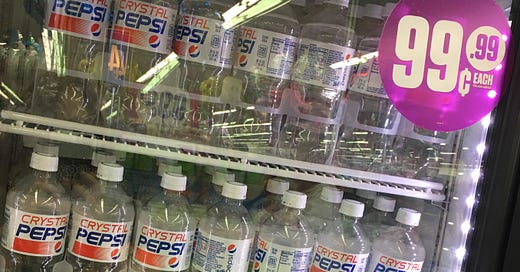I Need My Cheetos Lip Balm and Crystal Pepsi Said No One
The problem defines the product, not vice versa.
Once Upon a Pitch Problem #5
You made an incredible product. It can do all sorts of miraculous things. You decide now is the time to start a company. You pick your company name, register your website domain and build your pitch deck to raise money. The slides feature your super product including an exceptional visual rendering. You pitch to all the right audiences. You apply to accelerators and incubators. You talk to advisors and mentors. You pitch to angel investors. You make and take meeting after meeting, call after call, seek help in all the right places and although, everyone agrees the product is sensational, no one says, “I’m in, let’s build this company.”
Solutions
The customer problem comes first. After the introduction slide in the pitch deck, the next slide is the customer problem. It is not your product. It is not a rendering of your product. It is not a feature overview of your product. It is that terrible, awful, no good endemic problem or commercial inefficiency that the customer suffers in agony every day. Without the problem, the audience cannot follow your story. Concretely describe the customer emotional pain by tapping into the frustration, the farcical waste of time and resources, and the bone-weary fatigue created by the problem: “patient information systems are outdated” becomes “highly-trained, passionate nurses are wasting their time filling out archaic, poorly designed patient care forms instead of maximizing their hands-on time performing critical patient care.” Make the problem misery tangible and relatable so the audience will feel that acute pain blissfully relieved when you introduce the product on the next slide.
“And every day . . ..” If there is no damsel in distress, there is no need for a knight. Without a compelling, customer problem, you do not have a moral of the story, a reason to believe in the company. Building the product first and then trying to find the customer is a fool’s errand. The customer already has 99 problems and they don’t need a new one because you want to build something. Enterprises live and die by customer problems: how many customers suffer informs the market size, how much pain defines the price, and who is suffering reveals the type of employees and advisors needed. Obsession with the customer problem is the foundation of product design. Without a customer problem, your one-of-a-kind product is a hobby.
Coffee’s for closers only. In 2021, I had a video call with a physicist founder of a quantum components company. The company had just received seed funding and were sorting a sales strategy and hiring plan. Based on the proposed product portfolio, sales were going to be difficult because the plan of record was three different products to be sold to three different end-users with three different selling models (embedded, off the shelf and licensed) which means at least three different sorts of sales people managing three different types of distribution with three different customer support teams. That is an absurdly heavy lift for an immature company in an unproven commercial market. When I queried this nut to be cracked, the founder said, “No problem, our products are going to sell themselves.” I stared blankly at the founder. Then, I asked, “What jobs have you had selling products?” None. “What about in college or post-grad to pay your bills - work at a cafe, or a clothing store?” No. “What about a family business like a farm or dry cleaner?” No. “Did you sell products when you were a kid, like cookies at a bake sale or lemonade at a stand?” No. “Here’s the deal, ‘selling itself’ is not how selling works or product creation for that matter, especially in tech.” The blank stare was now looking back at me. “Watch the movie Glengarry Glen Ross and call me back.” A few days later the founder called, shaken, “The movie traumatized me. We are calling our customers today to make sure we deeply understand their problem.” Feeling your customers’ pain is much less traumatic than taking on debt to make a product no one buys.
What They Said
The Problem slide is the first main slide in any pitch deck. This slide is critical to starting off the story. The easiest story to tell is your own, so use your story to convey how you learned of the problem. For example, “Five years ago, I was . . ..” When the story is personal, investors feel why you need to solve this problem . . . In a ten-minute presentation, you want to spend one to two minutes on this slide. Take your time. This slide is the most important part of the pitch as it sets the stage for your story. – Tim Cooley, The Pitch Deck Book: How to Pitch Your Business and Secure Investors, “Problem Slide,” pages 87-93.
See You on the Track
Once Upon Pitch will be back on January 10, 2023.
Wishing you adventures, laughter, and many great stories in 2023.
Rafferty Jackson
Author The First Principles Pitch, startup storyteller, board member, advisor and investor. Once Upon a Pitch is a weekly newsletter looking at one business pitch problem and offering storytelling solutions to help solve that problem.



It baffles me how some start-ups are so in love with their tech/product that they can't see the forest. Thanks Rafferty!
A product looking for a commercial problem to fix is not just a Space Industry issue. I see it across all industries and as the newsletter title suggests, even big, successful companies make the same mistakes (albeit a lousy product extension is different than single product companies that have no customers). Living, breathing and agonizing over the customer problem remains the hallmark of successful product launches.